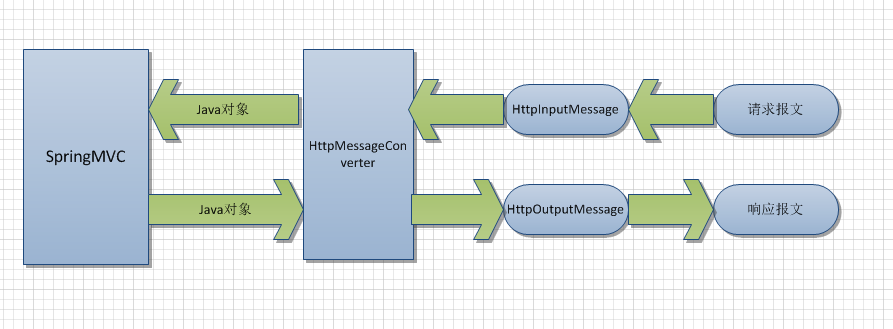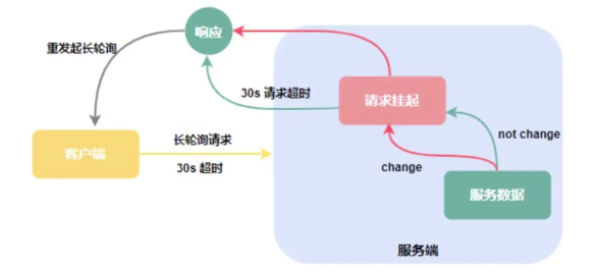Jersey 2.x Custom Injection Annotation With Attributes(Jersey 2.x 带有属性的自定义注入注解)
问题描述
I am in the process of migrating from DropWizard 0.7.1 to 0.8.1. This includes migrating from Jersey 1.x to 2.x. In my
implementation that uses Jersey 1.18.1, I had a MyProvider (changed all class names for simplicity's sake) that implements InjectableProvider. This
class would create MyInjectable objects, containing the custom injection annotation, MyToken. MyToken contains various attributes
that are passed on and read by MyInjectable. Lastly, in the Application class I register a new instance of MyProvider, as seen below.
I've done some research and can't seem to wrap my head around on how I'd recreate (or replace, I suppose) such a secenario in Jersey 2.x.
Here is the current, 1.18.1 implementation:
@Retention(RetentionPolicy.RUNTIME)
@Target({ ElementType.PARAMETER, ElementType.FIELD })
public @interface MyToken {
// Custom annotation containing various attributes
boolean someAttribute() default true;
// ...
}
public class MyProvider implements InjectableProvider<MyToken, Parameter> {
// io.dropwizard.auth.Authenticator
private final Authenticator<String, MyObject> authenticator;
public MyProvider(Authenticator<String, MyObject> authenticator) {
this.authenticator = authenticator;
}
@Override
public ComponentScope getScope() {
return ComponentScope.PerRequest;
}
@Override
public Injectable<?> getInjectable(ComponentContext ic, MyToken t, Parameter p) {
return new MyInjectable(authenticator, t.someAttribute());
}
}
class MyInjectable extends AbstractHttpContextInjectable<MyObject> {
private final Authenticator<String, Session> authenticator;
private final boolean someAttribute;
public MyInjectable(Authenticator<String, MyObject> authenticator, boolean someAttribute) {
this.authenticator = authenticator;
this.someAttribute = someAttribute;
// ... Removed a few paramters for simplicity's sake
}
@Override
public MyObject getValue(HttpContext c) {
final HttpRequestContext request = c.getRequest();
// ... Removed code not pertaining to the question
return myObject;
}
}
// Lastly, the register call in the io.dropwizard.Application class
environment.jersey().register(new MyProvider(new MyProviderValidator(someValidator)));
Yeah Jersey made the creation of custom injections a bit more complicated in 2.x. There are a few main components to custom injection you need to know about with Jersey 2.x
org.glassfish.hk2.api.Factory- Creates injectable objects/servicesorg.glassfish.hk2.api.InjectionResolver- Used to create injection points for your own annotations.org.glassfish.jersey.server.spi.internal.ValueFactoryProvider- To provide parameter value injections.
You can read more about custom injection in Custom Injection and Lifecycle Management. One shortcoming of the documentation is the lack of explanation of how to inject parameter values. You could get away with simply implementing the InjectResolver, and you would be able to inject into fields with your custom annotation, but in order to inject into method parameters, we need to ValueFactoryProvider.
Luckily there are some abstract classes we can extend (which the documentation also fails to mention) that will make life a little easier. I has to scour the source code of the org.glassfish.jersey.server.internal.inject package for a bit to try and figure it all out.
Here's a full example to help get you started.
Token (injectable object)
public class Token {
private final String token;
public Token(String token) { this.token = token; }
public String getToken() { return token; }
}
@TokenParam (our injection annotation)
@Retention(RetentionPolicy.RUNTIME)
@Target({ElementType.PARAMETER, ElementType.FIELD})
public @interface TokenParam {
boolean someAttribute() default true;
}
TokenFactory (implements Factory per the first bullet point, but we just extend the AbstractContainerRequestValueFactory. There we'll have access to the ContainerRequestContext. Note, that all these HK2 components, we can inject other dependencies into them, for example the TokenAuthenticator, which we will bind to HK2 later.
import javax.inject.Inject;
import javax.ws.rs.WebApplicationException;
import javax.ws.rs.core.HttpHeaders;
import javax.ws.rs.core.Response;
import org.glassfish.jersey.server.internal.inject.AbstractContainerRequestValueFactory;
public class TokenFactory extends AbstractContainerRequestValueFactory<Token> {
private final TokenAuthenticator tokenAuthenticator;
@Inject
public TokenFactory(TokenAuthenticator tokenAuthenticator) {
this.tokenAuthenticator = tokenAuthenticator;
}
@Override
public Token provide() {
String auth = getContainerRequest().getHeaderString(HttpHeaders.AUTHORIZATION);
try {
if (tokenAuthenticator.authenticate(auth).get() == null) {
throw new WebApplicationException(Response.Status.FORBIDDEN);
}
} catch (AuthenticationException ex) {
Logger.getLogger(TokenFactory.class.getName()).log(Level.SEVERE, null, ex);
}
return new Token("New Token");
}
}
TokenParamInjectionResolver (implements the InjectResolver per bullet point two. I simply extend ParamInjectionResolver. If your interested in what's going on under the hood, you can find the class in the source code I linked to)
import org.glassfish.jersey.server.internal.inject.ParamInjectionResolver;
public class TokenParamInjectionResolver extends ParamInjectionResolver {
public TokenParamInjectionResolver() {
super(TokenFactoryProvider.class);
}
}
TokenFactoryProvider (implements the ValueFactoryProvider per the third bullet point. I simply extend AbstractValueFactoryProvider. Again, you can look at the source for the under the hood details)
import javax.inject.Inject;
import org.glassfish.hk2.api.Factory;
import org.glassfish.hk2.api.ServiceLocator;
import org.glassfish.jersey.server.internal.inject.AbstractValueFactoryProvider;
import org.glassfish.jersey.server.internal.inject.MultivaluedParameterExtractorProvider;
import org.glassfish.jersey.server.model.Parameter;
public class TokenFactoryProvider extends AbstractValueFactoryProvider {
private final TokenFactory tokenFactory;
@Inject
public TokenFactoryProvider(
final MultivaluedParameterExtractorProvider extractorProvider,
ServiceLocator locator,
TokenFactory tokenFactory) {
super(extractorProvider, locator, Parameter.Source.UNKNOWN);
this.tokenFactory = tokenFactory;
}
@Override
protected Factory<?> createValueFactory(Parameter parameter) {
Class<?> paramType = parameter.getRawType();
TokenParam annotation = parameter.getAnnotation(TokenParam.class);
if (annotation != null && paramType.isAssignableFrom(Token.class)) {
return tokenFactory;
}
return null;
}
}
TokenFeature (Here we bind all the components seen above, even the TokenAuthentictor, which I have left out, but if your usual Dropwizard Authenticator. I also made use of a Feature. I tend to do this to wrap components of a custom feature. This is also where you can decide all the scoping. Just note some components are required to be in Singleton scope)
import javax.inject.Singleton;
import javax.ws.rs.core.Feature;
import javax.ws.rs.core.FeatureContext;
import org.glassfish.hk2.api.InjectionResolver;
import org.glassfish.hk2.api.TypeLiteral;
import org.glassfish.hk2.utilities.binding.AbstractBinder;
import org.glassfish.jersey.server.spi.internal.ValueFactoryProvider;
public class TokenFeature implements Feature {
@Override
public boolean configure(FeatureContext context) {
context.register(new AbstractBinder(){
@Override
public void configure() {
bind(TokenAuthenticator.class)
.to(TokenAuthenticator.class)
.in(Singleton.class);
bind(TokenFactory.class).to(TokenFactory.class)
.in(Singleton.class);
bind(TokenFactoryProvider.class)
.to(ValueFactoryProvider.class)
.in(Singleton.class);
bind(TokenParamInjectionResolver.class)
.to(new TypeLiteral<InjectionResolver<TokenParam>>(){})
.in(Singleton.class);
}
});
return true;
}
}
And finally simply register the feature
register(TokenFeature.class);
Now you should be able to inject the Token with @TokenParam, as well as your usual entity bodies (which would not be possible if we didn't implement the ValueFactoryProvider
@POST
@Consumes(MediaType.APPLICATION_JSON)
public String postToken(@TokenParam Token token, User user) {
}
UPDATE
It's kind of a half-@$$ example for your particular use case. A better approach would probably have a clone method in your Factory class and create a new TokenFactory with some parameters (maybe that you get from your annotation. For example, in the TokenFactory` you can have something like
public class TokenFactory extends AbstractContainerRequestValueFactory<Token> {
public TokenFactory clone(boolean someAttribute) {
return new TokenFactory(authenticator, someAttribute);
}
In the TokenFactoryProvider ine createValueFactory method, you then call the clone method
TokenParam annotation = parameter.getAnnotation(TokenParam.class);
if (annotation != null && paramType.isAssignableFrom(Token.class)) {
return tokenFactory.clone(annotation.someAttribute());
}
Or you could actually create the factory inside the method. you have options.
UPDATE 2
See Also
- jersey 2 context injection based upon HttpRequest without singleton
UPDATE 3
Starting Jersey 2.26, the dependency injection has changed. You will want to look at this post for example of how the code has changed in implementing this same injection.
这篇关于Jersey 2.x 带有属性的自定义注入注解的文章就介绍到这了,希望我们推荐的答案对大家有所帮助,也希望大家多多支持编程学习网!
本文标题为:Jersey 2.x 带有属性的自定义注入注解


- Jersey REST 客户端:发布多部分数据 2022-01-01
- 将log4j 1.2配置转换为log4j 2配置 2022-01-01
- C++ 和 Java 进程之间的共享内存 2022-01-01
- 如何使用WebFilter实现授权头检查 2022-01-01
- Safepoint+stats 日志,输出 JDK12 中没有 vmop 操作 2022-01-01
- 从 finally 块返回时 Java 的奇怪行为 2022-01-01
- Eclipse 插件更新错误日志在哪里? 2022-01-01
- value & 是什么意思?0xff 在 Java 中做什么? 2022-01-01
- Spring Boot连接到使用仲裁器运行的MongoDB副本集 2022-01-01
- Java包名称中单词分隔符的约定是什么? 2022-01-01





